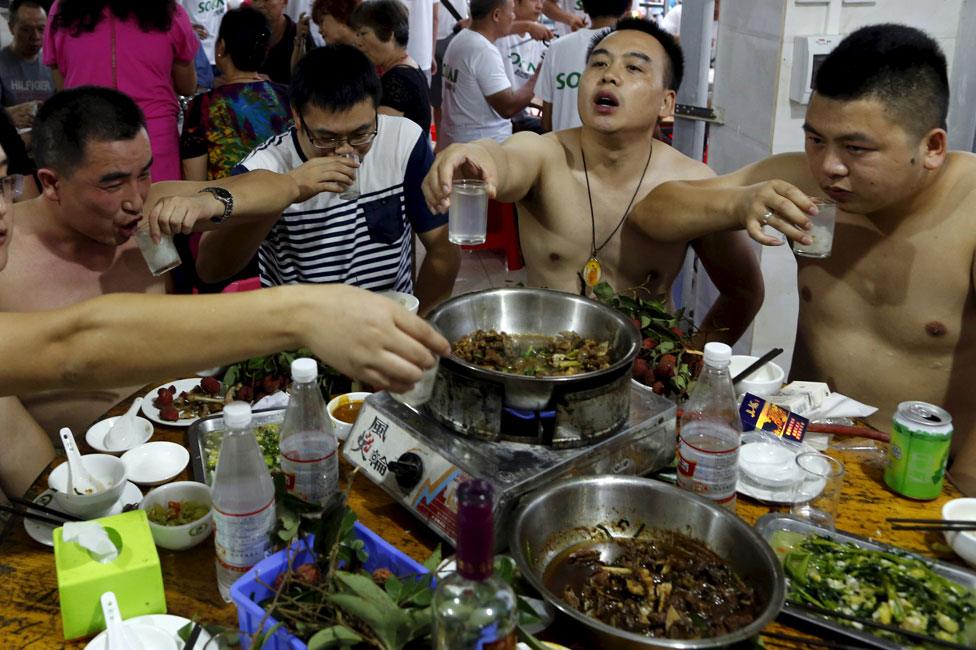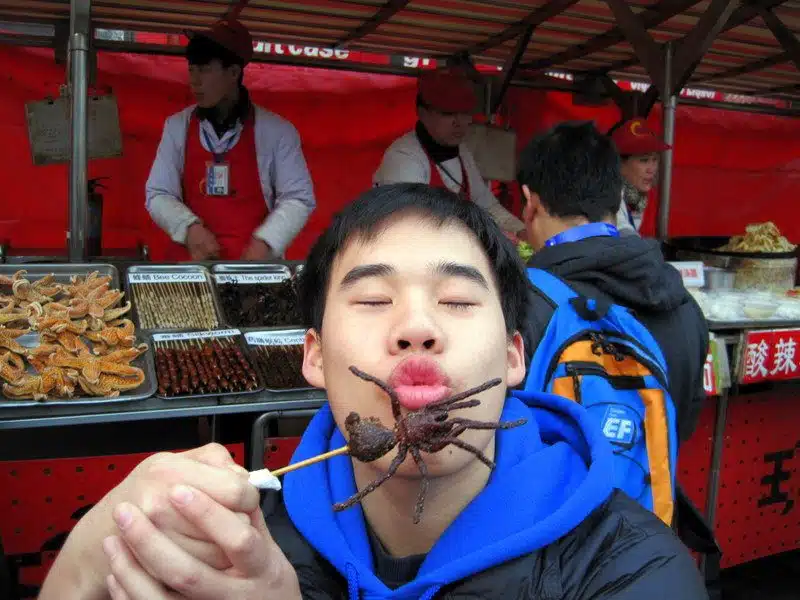20 Top Facts To The Ultimate Guide to Chinese Cuisine
20 Top Facts To The Ultimate Guide to Chinese Cuisine
Blog Article
Top 10 Tips For Local Specialties When Shopping In China
1. Research before you travelTip. Learn about the places that is known for. Suzhou, for example, is known for its silk. Jingdezhen, for its porcelain and Tibet, because of its thangkas.Pro: It allows you to focus your shopping and prevents time wastage.Pros: It needs preparation and familiarity with local landmarks.
2. Buy locally to ensure authenticityTIP: Buy products directly from their place of origin to guarantee the authenticity and quality of the item.Pros: Reduces the possibility that copyright products could be sold, and helps local artists.Con: Might require travel in less-visited areas or rural regions.
3. Go to an artist's studio or visit an art galleryLook for small-scale shops and artisan hubs, rather than the usual stores.Pro: This will give you a deeper appreciation of the art and allow you to buy directly from the artists.Con: The cost of hand-crafted products is higher and it can be difficult to bargain.
4. The significance of language in the cultural contextFind out the story behind your items like cloisonnes, jade sculptures or calligraphy.Pro: Helps you appreciate the product and gives them more meaning.Cons: It may require some time to learn all the cultural subtleties.
5. Check the Quality with CareYou can test the quality of items by looking them up such as tea, ceramics embroidery or tea.Pro: It will keep you from disappointment as you'll get exactly what have to.Pro: It requires some experience or guidance to find the best quality products.
6. Beware of products that are mass-producedFind unique, hand-crafted objects as opposed to mass-produced reproductions.Pro: Ensures that you return home with a truly special souvenir.Con: It is more expensive and difficult to locate authentic craftsmanship.
7. Compare PricesTIP: Try checking different stores or stalls in order to compare prices on the same product.Pro: Helps identify reasonable pricing ranges and prevent being overcharged.Cons: Time-consuming, particularly in large markets.
8. Buy Tea from Trusted VendorsTip: In regions like Hangzhou or Fujian Go to reputable tea houses for Longjing (Dragon Well) or Tieguanyin teas.Pro: Guarantees authenticity and superior quality.Cons: It may be difficult for novices to judge the quality of tea.
9. Local CustomsSome sellers will expect you to haggle or consider it part of the shopping experience.The pros shopping in a multicultural setting can be fun.Con: Not knowing the rules can lead to awkward interactions.
10. Pack judiciouslyIt is important to plan out how you will transport bulky or fragile regional specialties like silk or ceramics home.Pro: Avoids damage to your goods and makes sure they arrive safely.Cons: Additional logistical issues and the possibility of shipping cost.
Advantages of shopping for local SpecialtiesUnique souvenirs. These aren't items anywhere else.Cultural Immersion - Shopping locally for goods connects you to the area's heritage, craftsmanship and culture.Direct purchases from artisans support local economies.The disadvantages of shopping for regional SpecialtiesAuthenticity concerns: risk of purchasing imitations or versions of inferior quality.Logistical Challenges: Transporting large or fragile items can be a challenge.Locally-sourced products, especially those made by hand, aren't cheap.These guidelines will enable you to make memorable purchases during your visit to China. See the best authentic Chinese culinary adventures for more info including delicious Chinese dishes to try, the ultimate guide to Chinese cuisine, China flavorful food culture, a culinary journey through China, a deep dive into China food culture, delicious Chinese dishes to try, authentic tastes of China, food guide to China best cities, China famous food destinations, explore China food scene and more.
Top 10 Tips For Dining Etiquette The Manners, Manners And Manners In China
1. Wait to Be SeatedTip In formal settings, you should wait until the host or your server guides you to a table. The seating arrangement show hierarchies.Pro: Shows respect to cultural norms and the authority of host.Con: It may be difficult to recognize the host in casual environments. This could cause confusion.
2. Chopsticks - How do you make them work properlyIt is best not to stick chopsticks directly into rice, as this looks like a funeral ritual. When they are not being used put them in the chopstick holder and/or lay them flat on a plate or in a bowl.Pro: Prevents accidental disrespect.Con: Learning proper chopstick etiquette might take practice for beginners.
3. Respect for EldersAllow the person who is older or more old eat first. They are also typically served first.Pro: Keeps the traditional family and society hierarchies.Con: In informal situations, this practice may seem unnecessary or unnoticed.
4. Share DishesChinese dining is communal. Food items will be set in the center for everyone to enjoy. Don't eat the last portion unless offered.Pro: Promotes an experience that is shared and creates a sense of community.Cons: Sharing could limit your food choices if you're selective.
5. Avoid Wasting FoodTip: Take only what you can eat, as eating food that is left on the table can be considered irresponsible or unprofessional.Pro: Thank the host for their effort.Con: Underestimating the size of your appetite can leave you unable to finish.
6. Toast properlyIf you're toasting someone, it's acceptable to raise your drink a bit higher than someone who is respected or senior.Pro Represents politeness and an appreciation of cultural hierarchy.Con: It can be difficult to remember when there are multiple toasts.
7. Don't flip the fish!Tips: In the southern part of China the act of flipping a fish after eating the other side is considered to be bad luck, symbolizing the possibility of a boat being sunk.Pro: Refrains from the offending regional superstitionsContra: The cultural customs in northern China may be different and this could result in mixed practices.
8. It's OK to Slurp and BurpA tip: Slurping on soups or noodles is thought of as a sign of respect and not rudeness, but rather of joy. The act of slurping is considered to be a compliment for the chef.Pro: Helps you take a break and relax without worrying about some Western manners.Con: This may be in conflict with your personal cultural norms, making it feel awkward.
9. Chopsticks are not intended to be employed as a point of reference.Tip: It's considered rude to use chopsticks for gestures or to point them. Only use chopsticks for eating.Pro: The restaurant maintains an atmosphere of respect.Con: It's extremely easy to forget this rule in lively conversations.
10. You Should Pay Attention to the Bill PayerTips Reminder: A host in China typically demands to pay for the meal. While it's courteous however, expect to be met with resistance.Pro: Expresses gratitude to the host's generosity.Con: Insisting on something too much can appear to be unsincere.
There are many advantages to following dining etiquette in ChinaCultural Respect: Respecting traditions and local culture promotes the spirit of goodwill.Social Bonding: Following traditions creates a sense of connection and appreciation.Avoids Missteps: Proper etiquette helps you navigate unfamiliar dining situations smoothly.Enjoy the authentic experience. Participating in customs and traditions enriches the overall experience.Cons of Following China Dining EtiquetteComplex Rules: The abundance of customs could be overwhelming for newcomers.Regional Variations: Etiquette norms can differ between regions, causing potential confusion.Time-consuming: Following formalities could delay the beginning of your meal.Unfamiliar gestures - Certain techniques such as correctly using chopsticks requires training and practice.It is possible to navigate Chinese Dining Etiquette with ease by following these guidelines. This will create an enjoyable and pleasant experience for both you as well as your guests. Check out the top savor China regional food specialties for more examples including the flavors of Chinese cuisine, discover China culinary delights, Chinese food you must try, savoring the best of Chinese cuisine, the ultimate guide to Chinese cuisine, explore China riCh food history, experience traditional Chinese food, Chinese cuisine you need to try, China food heritage revealed, a guide to China food scene and more.